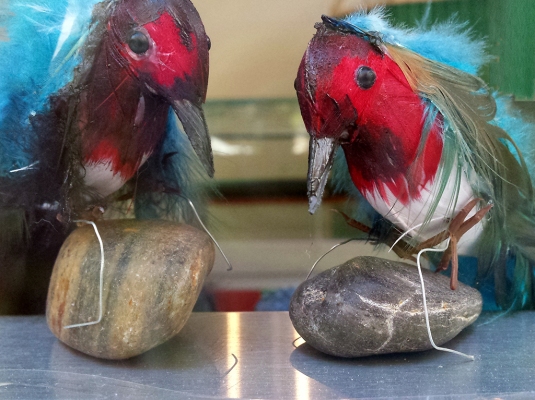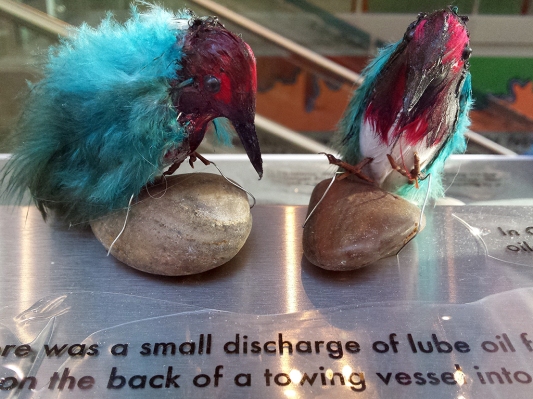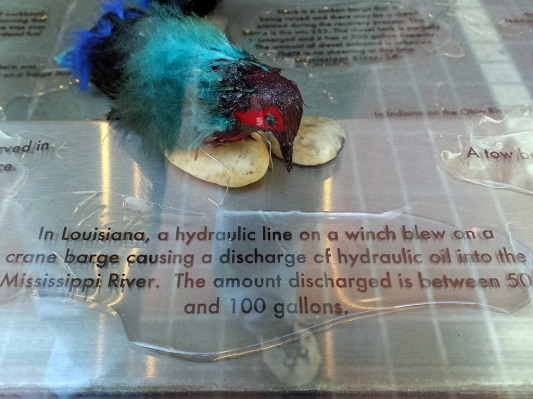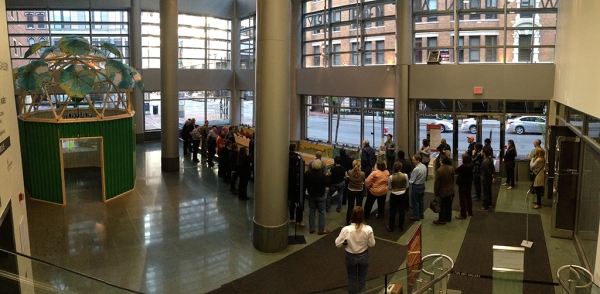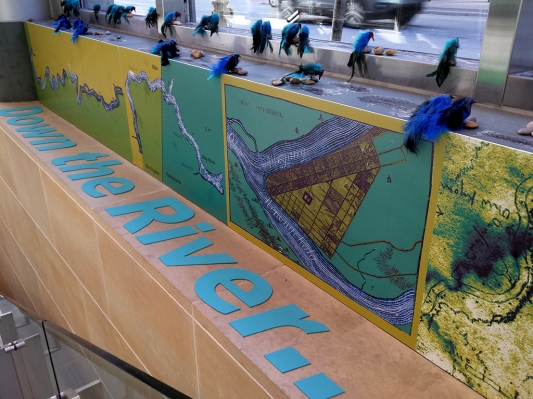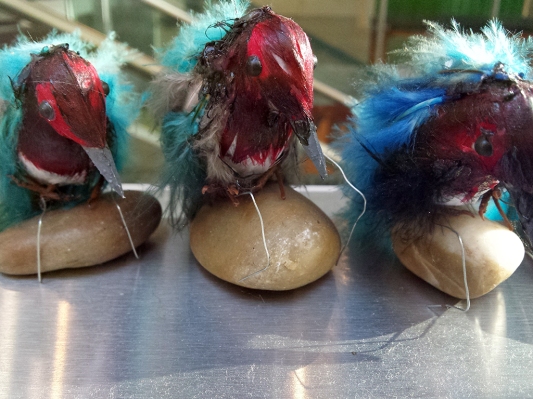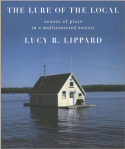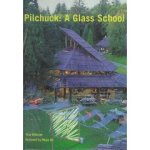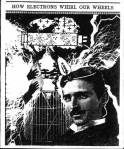Here’s where you can see a closeup of the glass cling that the gallery’s sign guy installed for me. I had taken a tiny-teeny piece of ocean wave clip art and turned it into a repeating tile. We used it on the gallery window and the upper outside edge of glass, wrapping its way around all the way down the stairs to the second set of galleries and to the conclusion of the journey in New Orleans. I loved the way the this graphic interacted with the gallery’s already existing white lettering signage on their windows and interior glass.
12
There were about a hundred of these little birds, perched on river stones. Even though they started life in a factory in China and then made their way to my studio factory, they each had their own distinct personalities.
13
In addition to the oil-slick sickness I gave the birds fluorescent blue feathers. My idea was that with enough toxicity, wildlife will surely mutate into a creature that we may not recognize as a bird in the traditional sense.
14
This text came directly from a report made by an average citizen to the U.S. Coast Guard. Amazingly, you can find them all, thousands of reports, in spreadsheets on a federal web site. The text was printed on transparencies, cut up in wavy curvy shapes and then coated in an epoxy, creating the appearance of a puddle.
15
Down the River ~ 4
July 12, 2015 — Carolyn P. SperanzaDown the River ~ 3
July 10, 2015 — Carolyn P. SperanzaHere’s the entrance gallery, on the top floor of the Weston. You can see Richard and Doug Harned’s “Water Theatre” to the left. This shot was taken during the artist presentations session one evening in April.
8
Here I am at the top of the stairs that go down into the other gallery spaces. “Down the River: Muhammad Ali threw his Olympic Gold Medal into the Ohio” was made for the staircase. You can probably see the street windows to the side and behind me with the smaller birds perched there.
9
Over in the Carnegie Library archives, you can find a collection of the original “Navigators.” Kind of like farmer almanacs, on a yearly basis, boatmen would chronicle the twists and turns of rivers, as well as the development of army posts and towns along the riverfront. The Navigator that I used for the map panels was published in 1818. It took some work to determine where current state lines would have been drawn.
10
This is the starting point of the journey down the river. I just love old maps, and this one of Pittsburgh is awesome. The colors are aesthetic choices on my part, although as we go further south, state colors get redder and redder. The printing is direct to foamcore with just a mild sheen.
11
Down the River ~ 2
July 9, 2015 — Carolyn P. Speranza. . . And here’s the birds! that great you from the street. People do stop to look at them and read their sad story.
4As I made alot of these little guys – and big ones too, Mick and I started to call our house, the “bird factory.” It really was set up like a factory with buckets of feathers and birds laid out in certain order.
5
You can just begin to see the text, trapped in a liquid-appearing epoxy, that people would stop and read from the street outside the gallery.
6
“Down the River . . .” started in Pittsburgh at the head of the Ohio and took us down the Mississippi to New Orleans. Two narratives ran along these rivers. The one you see here is the reports people called into the U.S. Coast Guard in 2013 -14 of toxic dumping and spills along the Ohio and Mississippi Rivers.
7

